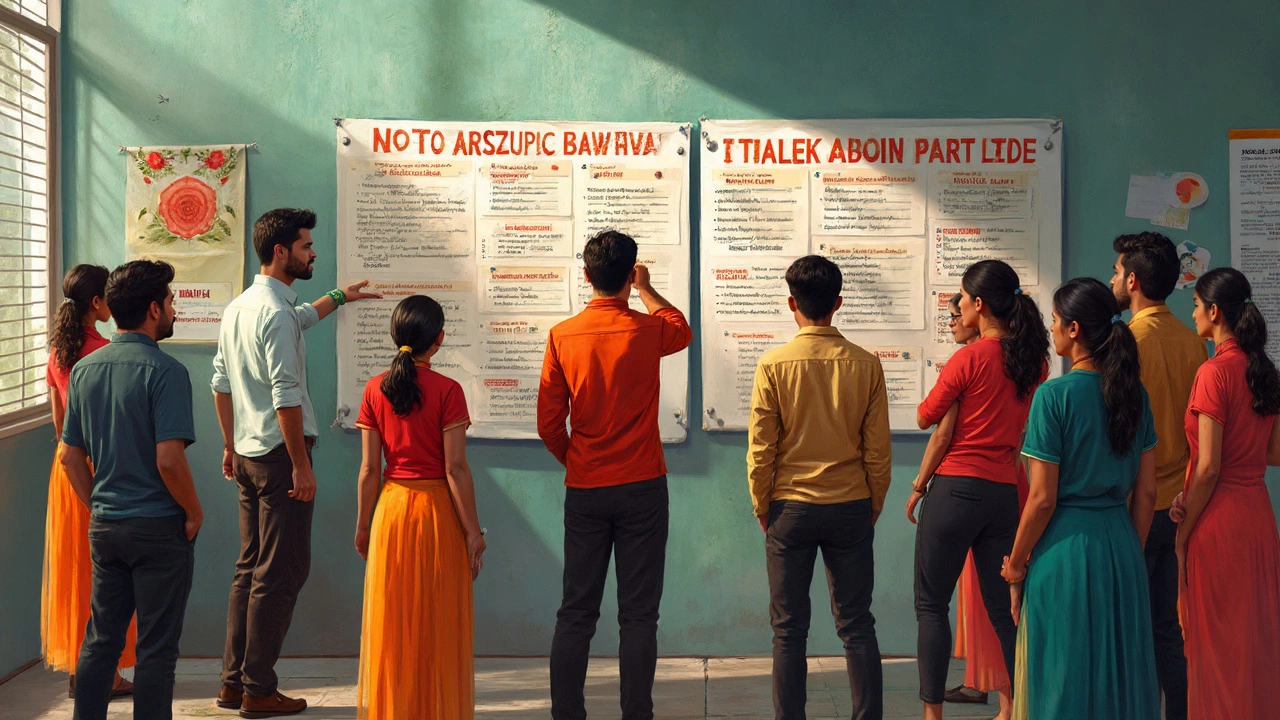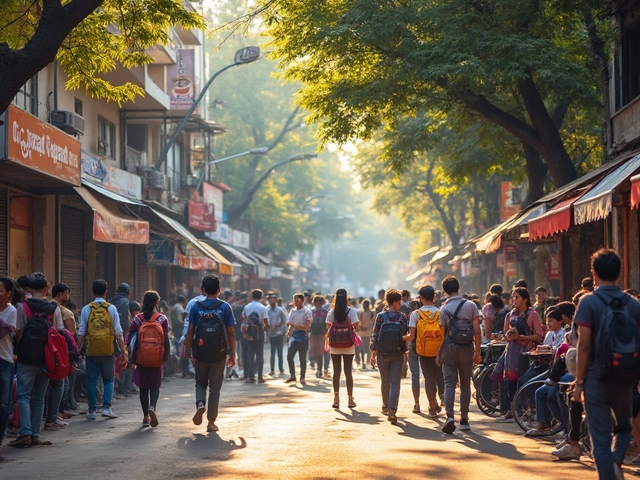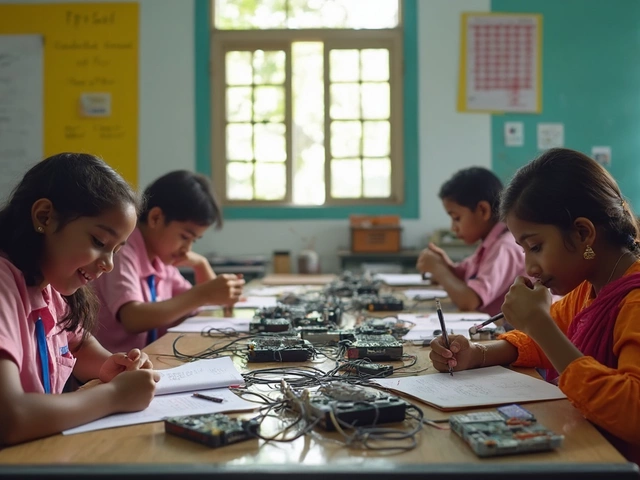Sick of hearing that every government exam gets a million applicants? You’re not imagining it—some postings are a total stampede. But here’s the secret: not every government job is a battle royale. Some fly under the radar, and hardly anyone even bothers to apply. Why? It usually comes down to where the job is, what work you’ll actually do, and how many people are willing to give up their current comfort zones.
Here’s a quick reality check: most people gun for the famous spots like SSC CGL, SBI PO, and state civil services. That leaves tons of rare opportunities wide open. Ever heard of positions like technical assistants at small research labs, or clerks in the Northeast? The number of applicants per seat can be five times lower than big-name exams. That’s not magic, just a case of most folks chasing what everyone else wants.
If you’re aiming to get into government service without ten years of relentless prep, you need to look beyond the obvious. The trick isn’t just working harder than everyone else — it’s working smarter. Keep reading and I’ll show you where to dig for easy-to-miss jobs, the smartest search strategies, and how to avoid falling for hyped-up competition myths.
- The Real Reason Some Government Jobs Get Fewer Applicants
- Wildcards: Surprising Low-Competition Government Jobs
- Tips to Find and Grab These Openings
- Common Myths About 'Easy' Government Jobs
The Real Reason Some Government Jobs Get Fewer Applicants
Most people think every government job is tough to get, but that's not always true. The main reason some jobs have less competition is because of location, job profile, required skills, or just lack of hype. People tend to skip jobs in far-flung places, in small towns, or North-Eastern states because they don't want to move away from their families or big city life. Sometimes the work itself scares folks off—like field posts, physical jobs, or roles seen as "boring" or "remote."
Another huge factor? The educational background and skill requirements. If a job asks for a very specific degree, a technical diploma, or knowledge of a local language, the number of eligible folks drops fast. For instance, many technical assistants’ posts in small central government institutes need a diploma or ITI. Since most applicants aim for broader, all-graduate posts, these end up with fewer takers.
Here's a quick look at real numbers. Check out this comparison of average applicants per vacancy for popular and "unpopular" roles from recent national data:
| Job Title | Location Type | Average Applicants per Vacancy |
|---|---|---|
| SSC CGL (Generalist) | All-India/Urban | 2100 |
| State Agriculture Extension Officer | Rural/Specific State | 140 |
| Technical Assistant (Central Govt Lab) | Small City | 95 |
| Bank Clerk (Northeast) | Remote | 48 |
Not exactly what you'd expect, right? But these hard numbers prove that least competition doesn't happen by accident. Jobs that barely see a crowd usually share these traits:
- Remote or less glamorous locations
- Very targeted educational needs
- Posts requiring fieldwork or irregular hours
- Special skilled roles (lab, research, agriculture)
If you want to actually boost your odds, don't fall in with the crowd. Zero in on what makes a job "less popular," and use that info to your advantage. It's a simple numbers game—and the right move can make all the difference.
Wildcards: Surprising Low-Competition Government Jobs
So what jobs actually have the least competition? The funny thing is, it's often the government jobs nobody brags about or even talks about online. While everyone dreams of being an IAS or bank officer, a whole bunch of other roles fly under the radar. You can boost your odds big time if you’re willing to go for these so-called wildcards.
Least competition is usually found in jobs with outstation postings, less glamour, or special qualifications. Want proof? Data from the 2024 recruitment cycle showed under 1,200 applicants for 200 “Foreman (Technical)” posts in Ministry of Defence, compared to over 1.3 million for 7,000 SSC MTS posts. That’s an applicant-to-seat ratio of just 6:1, vs almost 190:1 for MTS.
Check out this simple table:
| Post | No. of Posts | No. of Applicants | Applicants Per Seat | Unpopular Reason |
|---|---|---|---|---|
| Foreman (Technical) – MoD | 200 | 1,200 | 6 | Remote locations, technical degree needed |
| Junior Statistical Officer (State level) | 80 | 1,500 | 18.7 | Maths/statistics degree needed |
| Lab Assistant (Central Research Labs) | 50 | 800 | 16 | Contractual posts, less city postings |
| Clerk (North-East States) | 140 | 2,000 | 14.3 | Must work in North-Eastern region |
| Multi-Tasking Staff (Central Govt.) | 7,000 | 1,300,000 | 185.7 | Everyone applies! |
These numbers aren’t one-off. The same pattern was seen in the past three years according to several job notification portals. Jobs that ask for niche degrees, special trade skills, or require relocation just get fewer takers.
Want a real-world insight? A senior HR official from a popular Indian job portal admitted,
“Most candidates filter jobs by exam name or city, so posts in remote states, technical research, or graduate-only profiles get up to 80% fewer applicants than mainstream exams.”
Here’s where to look for lower-competition government jobs:
- Technical roles (mechanical, statistical, chemical assistants, etc.)
- State-level posts in far-off or less urban locations
- Contractual roles that later turn permanent
- Jobs needing regional language skills
If you’ve got a degree in statistics, engineering, or life sciences, you’re in luck. These jobs pay similar to other entry-level government positions but the chaos around them is way less. The downside? You might have to move to a tier-2 city or remote region, at least in the beginning. But hey, that’s a small tradeoff for skipping the crazy exam crowds and finally landing that sarkari job.

Tips to Find and Grab These Openings
Hunting for government jobs with the least competition is about knowing where to look and acting on info others ignore. Most people stick to the big, crowded boards, so you’ll stand out by going the other way. Here’s how to do it smarter:
- Watch the Official Sites Nobody Else Checks: Everyone scrolls the UPSC and SSC sites, but did you know agencies like DRDO, ISRO, and the Ministry of Environment post low-key openings on their websites? The North Eastern Council, small state commissions, and autonomous colleges often have way fewer takers.
- Join Niche Job Portals and Telegram Groups: Real talk: a ton of openings are shared first in groups like ‘NE Region Jobs’, ‘Technical Govt Job Alerts’ or state-specific channels. These channels pop up earlier than official notifications sometimes.
- Stay Ready for ‘Walk-In’ Rounds: PSU hospitals or state labs sometimes hire through walk-in interviews, and many don’t even fill all the spots. If you’re local, you’ve got a serious edge.
- Apply in Smaller Towns and Remote Areas: Data from 2022 by Staff Selection Commission showed that postings in tough locations—Arunachal Pradesh, remote Himachal, Jammu & Kashmir—got less than half the applications compared to Delhi or Mumbai.
- Look Beyond English: Certain jobs (clerks, stenographers, forest guards) in Hindi or regional-language states see less crowd from the ‘mainstream’ part of India. If you’re comfortable in a local language, that’s an inbuilt advantage.
Check out this snapshot from last year—spot the huge gap in applications based on job type and location:
| Job Posting | Region | Posts | Applicants | Applicants per Post |
|---|---|---|---|---|
| Data Entry Clerk | Meghalaya | 30 | 300 | 10 |
| Railway ASM | Uttar Pradesh | 200 | 40,000 | 200 |
| Lab Assistant | Sikkim | 15 | 100 | 6.7 |
| SSC CGL (officer) | India-wide | 7,500 | 15,00,000 | 200 |
See the difference? Most folks overlook these easier targets. If you stay informed, target less sought-after areas, and apply where your profile fits, your odds go way up. Don’t wait for mainstream results—go for those offbeat openings where you actually have a real chance.
Common Myths About 'Easy' Government Jobs
Lately, there’s a rumor mill about so-called "easy" government jobs. Let’s get real—most people, especially beginners, trip up here by listening to hearsay rather than looking at what actually happens on the ground. Below are some popular myths, busted with facts and actual numbers.
- Myth: All low-competition jobs are easy to crack. Truth: Fewer applicants don’t always mean easy papers. Many specialized jobs—say, junior technical posts or remote-location clerks—have tough subject sections or very specific eligibility requirements. If you don’t fit exactly, it’s a no-go.
- Myth: Sitting for less popular exams means a chill job afterwards. Reality? Many low-competition jobs are in remote areas or require odd shifts. If you care about lifestyle perks or city posting, double-check the details. The grass often looks greener from the outside.
- Myth: You’ll earn the same no matter what government job you choose. In fact, pay, grade, and promotion chances may be limited in these low-application jobs compared to headline-grabbing posts like Railways or Banks.
- Myth: Exams for low-competition posts are held regularly. Actually, many such roles don’t show up every year, and if you miss the notice, you’ll have to wait a long time for the next shot.
Check out some real data to see the difference in competition levels:
| Post | Applicants/Seat | Typical Location | Average Salary (INR/month) |
|---|---|---|---|
| SSC Multi-Tasking Staff (Remote) | 200-300 | North-East, Hill areas | 18,000-22,000 |
| Technical Assistant (Lab) | 100-200 | Small towns, remote HQs | 25,000-35,000 |
| Gramin Dak Sevak | 250-350 | Rural villages | 12,000-14,000 |
| Bank Clerk (North-East) | 150-250 | Assam, Nagaland, Manipur | 22,000-28,000 |
The least competition is seen in jobs located in less popular areas or those needing special skills. But before you rush in, weigh the pros and cons honestly. Read the job notice fully. If the job ticks your boxes—like pay, location, and promotion line—then it’s a smart move. If not, don’t fall for the hype of ‘easy’ jobs, or you’ll end up with regret down the line.





